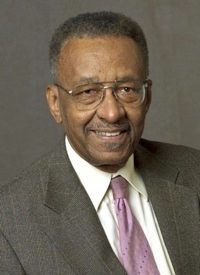
Heritage Foundation researchers Dr. Robert Rector and Rachel Sheffield laid out some facts about the poor in their report “Understanding Poverty in the United States: Surprising Facts About America’s Poor” (9/13/2011). Eighty percent of poor households have air conditioning. Nearly three-fourths have a car or truck, and 31 percent have two or more. Two-thirds have cable or satellite TV. Half have one or more computers. Forty-two percent own their homes. The average poor American has more living space than the typical non-poor person in Sweden, France or the U.K. Ninety-six percent of poor parents stated that their children were never hungry during the year because they couldn’t afford food.
“The Material Well-Being of the Poor and the Middle Class Since 1980” (10/25/2011) is a research paper by professor Bruce D. Meyer of the University of Chicago and The National Bureau of Economic Research and professor James X. Sullivan of the University of Notre Dame. In it they report: “Our results show evidence of considerable improvement in material well-being for both the middle class and the poor over the past three decades. Median income and consumption both rose by more than 50 percent in real terms between 1980 and 2009. In addition, the middle 20 percent of the income distribution experienced noticeable improvements in housing characteristics: living units became bigger and much more likely to have air conditioning and other features. The quality of the cars these families own also improved considerably. Similarly, we find strong evidence of improvement in the material well-being of poor families.”
The grim official measures of poverty or income stagnation reported are the result of a number of biases that understate well-being, such as relying exclusively on narrow income measures that do not reflect all the resources available to the household for consumption. Income measures fail to capture important components of economic well-being, such as wealth and the ownership of durables, e.g., houses and cars. For example, official measures would consider a retired couple who owned their car and mortgage-free $700,000 home and lived on $20,000 savings to be poor. Clearly, their income does not reflect their material well-being.
“Income Mobility in the U.S. from 1996 to 2005” (11/13/2007) is a report by the U.S. Department of the Treasury that shows considerable income mobility of individuals in the U.S. economy. “Roughly half of taxpayers who began in the bottom income quintile in 1996 moved up to a higher income group by 2005. Among those with the very highest incomes in 1996 — the top 1/100 of 1 percent — only 25 percent remained in this group in 2005. Moreover, the median real income of these top taxpayers declined over the study period.” These findings confirm previous studies dating back to the 1960s reaching the same conclusion, namely: At different periods of time, different people occupy different income groups, but the overall trend is upward.
What about the concentration of wealth? In 1918, John D. Rockefeller’s fortune accounted for more than half of 1 percent of total private wealth. To compile the same half of 1 percent of the total private wealth in the United States today, you’d have to combine the fortunes of Microsoft’s Bill Gates ($59 billion) and New York Mayor Michael Bloomberg ($19 billion), but with 10 other multibillionaires in between.
Our congressionally caused recession has indeed caused needless hardship for many Americans, but the big poverty and income stagnation hype is part and parcel of an agenda to make us more accepting of politicians getting their hands deeper into our pocketbooks in the name of helping the poor.
Walter E. Williams is a professor of economics at George Mason University. To find out more about Walter E. Williams and read features by other Creators Syndicate writers and cartoonists, visit the Creators Syndicate Web page at www.creators.com.
COPYRIGHT 2011 CREATORS.COM



